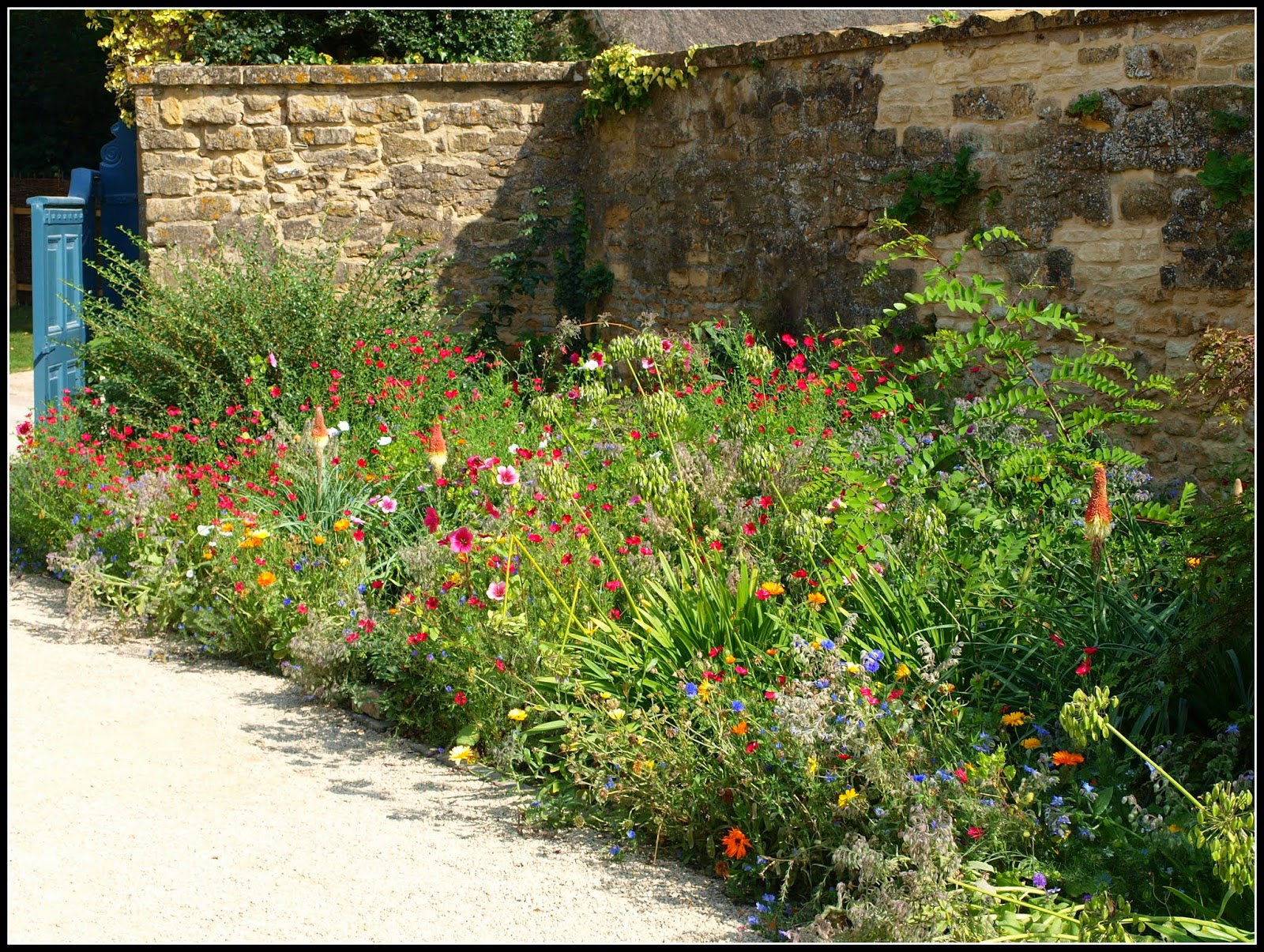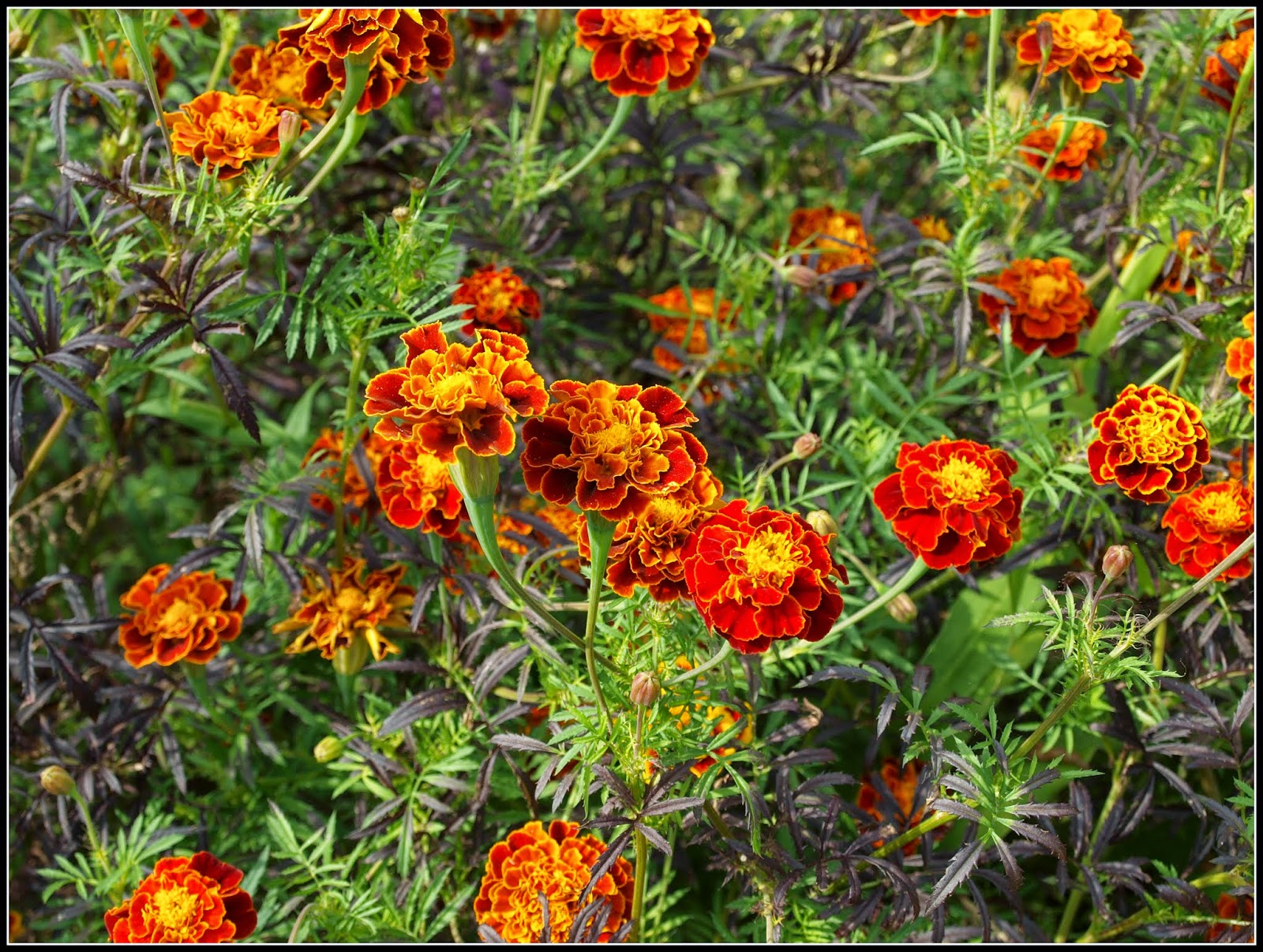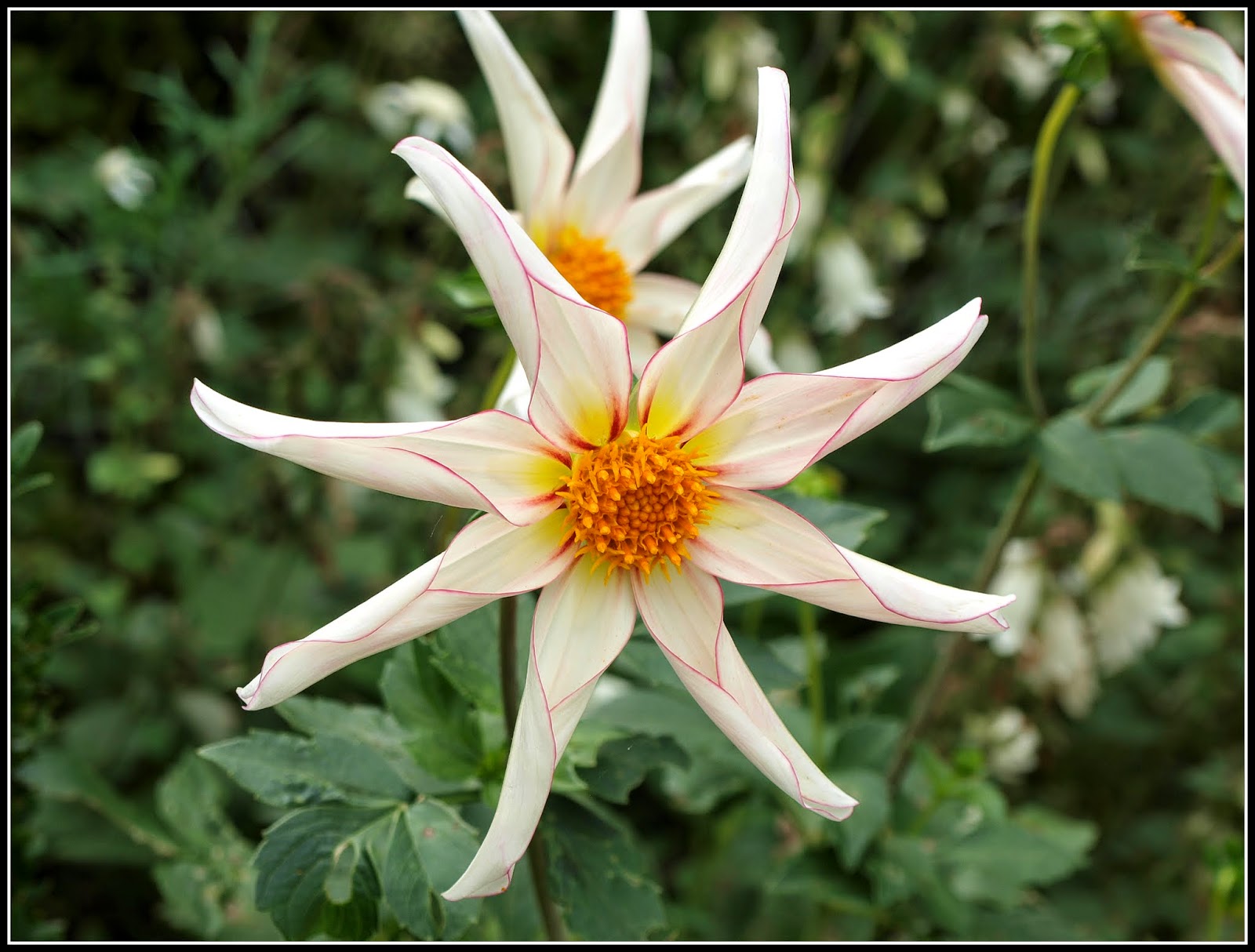Hidcote describes itself as "the place where the National trust learnt to garden". It was established in 1907 by Major Lawrence Johnston, who spent the next 40-odd years scouring the world for plants with which to fill his expanding garden.
The most characteristic aspect of Hidcote is that the garden is sub-divided into a number of smaller sections, equivalent to "rooms", enabling many different design and planting themes to be explored.
Johnston was an avid plant collector and travelled very extensively in search of new plants, as well as sponsoring plant-finding expeditions, and reputedly would only accept the best specimens. His garden contains an amazing array of plants - most of which are completely unknown to me! OK, there are plenty of the old favourites, like this Marigold:
...this Dahlia:
...and this Astrantia:
...and some well-known but still exotic plants like this Protea from South Africa:
But what is this?
Or this?
Can you see the Solar Topee helmet posed above the globe, rather cheesily symbolising his travels around the world?
At present the gardens are featuring an exhibition of modern sculpture, whose elements are liberally scattered throughout the gardens. I'm generally not very keen on sculpture or garden ornaments, and today I passed quickly by some of the more abstract offerings, but I did like some the animal-themed ones, such as this cute little piggy (labelled "Sitting Pretty"):
I also liked this aptly-positioned "Wall Lizard":
And this enormous though rather sinister Dragonfly:
Talking of sinister, what do you think of this "Velociraptor", evidently made from old car parts?
Another part of the property which I was particularly interested to see was the Vegetable Garden. This is a real vegetable garden (some of its produce is used in the property's café, and some of it is offered for sale to visitors), not an ornamental one. Here we see a fine patch of Cavolo Nero:
When you see this massive array of Leeks you probably won't be surprised to hear that "Leek and Cheese Macaroni" is one of the Specials on the café menu at present...
Behind the leeks visible in my photo were many more leeks at various stages of development, so "Leek and Cheese Macaroni" may well be a feature of that menu for some months to come!
Here is one of several "Bug Hotels", providing interesting nesting-places for beneficial insects:
To be honest, the flowers on display at Hidcote at this time were not the main event - many of them were definitely past their prime - but Autumn has much more to offer than flowers, and sometimes the colours of Autumn leaves can out-shine them:
Should it be of interest to any readers, let me end by saying that we had a very nice lunch in one of the property's two cafes, and also a browse around the extensive Plant Sales area (though on this occasion nothing took my fancy, so I didn't make any purchases). A visit to this place is strongly recommended for any keen gardener, though please note that access for disabled or less mobile people is evidently a bit of a challenge!



















We loved Hidcote when we visited a few years ago, By theway your scabious is an astrantia, I think the orange flower could be a type of abutilon and were the berries a variety of cornus?
ReplyDeleteAh. OK, thanks for the correction! I have no idea what the thing with the strange berries was. It had seed-pods which opened out into 4 lobes, each with a bright orange/red seed.
ReplyDeleteI'm the opposite. I love garden art. I wish I had some sculptures in the garden. But all I have are little ones.
ReplyDeleteIt looks like there's plenty to see there and lots of interest. I love the little piggy, you may know, I have quite a few pigs in my garden.
ReplyDeleteHi Mark, Yes, on our trip to the Cotswolds, we visited Stow on the Wold and loved it! We did not go to Hidcote, however, as we were on a bus tour. I think next time, I would plan our own itinerary. The area is lovely and was just unforgettable. It was summer and the flowers were gorgeous. I am interested in the bug "hotel"...I've never seen anything like it! Here, I am afraid the bad bugs and wasps, lizards and snakes would take it over. I know I sound like a dummy, but what are those green things on the ground and what is their purpose? Loved both your Cotswold posts and could do with more!!
ReplyDeleteEgretta, the green things are to allow you to walk on the soil without compacting it - a bit like putting down a plank,or walking-board, but much lighter. I don't know what they are officially called! I published on Facebook a lot of photos of Blenheim Palace, a place I think you would like. Or maybe you have already been there?
DeleteWe missed seeing Hidcote on our walking tour of the Cotswolds this past June. Our only transportation was our own legs so we would have had to use a bus or taxi which we didn't want to do. Thanks for sharing what we missed seeing.
ReplyDelete